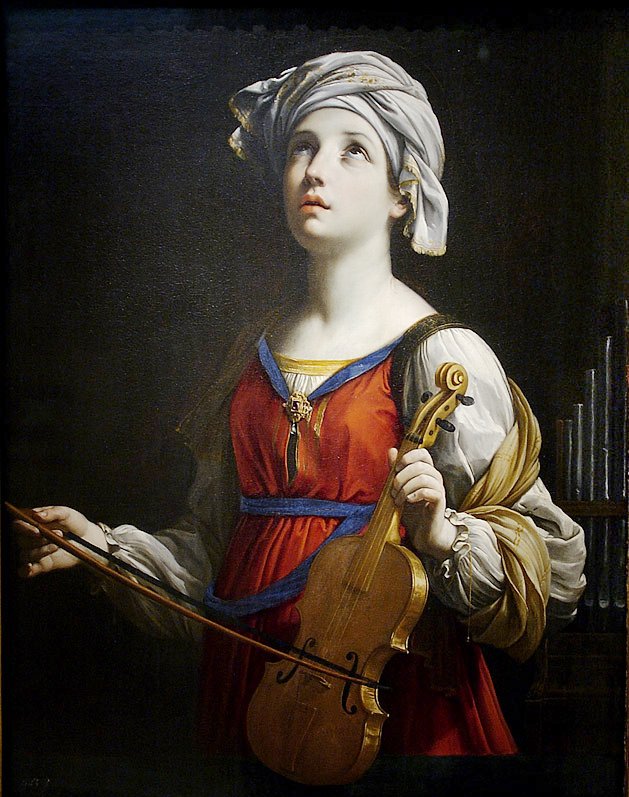 | ||||
| Saint Cecilia - Guido Reni, 1606 |
Saint Cecilia(Latin:Sancta Caecilia) is the patron saint of musicians,composers,instrument makers, music( especially Church music) and poets. The name Cecilia means blind and so, although it is not known for sure if she could see or not, she is also the Catholic patron saint of the blind. Saint Cecilia is the patron saint of music because as she was dying she sang to God. It is also written that when she was forced to marry Valerian, a pagan, she "sang in her heart to the Lord" as the musicians played. Her feast day is November 22 . She is one of seven women, excluding the Virgin Mary,commemorated by name in the Canon of the Mass.
It is believed that Saint Cecilia was born in the 2nd or 3rd century A.D. A religious romance telling the love story of Saint Cecilia and Valerian appeared in Greece in the 4th century A.D., and there is a biography of Saint Cecilia from the 5th century A.D. She is said to have been the daughter of a wealthy Roman family, a Christian from birth, who was promised in marriage to Valerian. Cecilia, however, had vowed her virginity to God and wore sackcloth, fasted and prayed in hopes of keeping this promise. Saint Cecilia told her husband of her wishes on their wedding night. She also told him that an angel watched over her to guard her purity. He wanted to see the angel, so Saint Cecilia sent him to Pope Urban Accounts on how and when Valerian saw the angle vary, but one states that Pope Urban baptized him and upon his return to Saint Cecilia, he saw her praying in her chamber and an angel by her with flaming wings, holding two crowns of lilies and roses, which he placed on their heads and then vanished. Another version says that Valerian's brother, Tibertitus, sees the crowns and is also converted.
After their conversion, the two brothers made it their mission to bury the martyrs that were daily being put to death by the prefect of the city, Turcius Almachius ( there was no prefect of that name). When the prefect heard of the brothers doings, he had them arrested and brought before the prefect, when Valerian and Tibertitus refused to sacrifice to the gods, they were executed by the sword. In the meantime, Saint Cecilia continued with making conversions of 400 people, who Pope Urban immediately baptize. She also prepared her home to become a church at her death.Then she was arrested and brought before the prefect.He ruled that she should die by suffocation in the baths. She was shut in for a day and a night and the fires were heaped up and made to glow and roar to their utmost, but Saint Cecilia did not perspire through the heat. Since she was still alive she was the ordered to be beheaded, but the executioner struck Saint Cecilia 3 times without severing her head and she would not die without receiving the Holy Communion. This left her mortally wounded and survived for 3 more days. In this time Saint Cecilia made more conversions and people came to her cell to soak up her blood with cloths and sponges. When she died the people by her cell knew she was destined to be a saint in Heaven.
 |
| Martyrdom of Saint Cecilia, by Stefano Maderno, ca. 1599-1600 |
| Facade of Santa Cecilia, a 1775 project with a 12th century belltower |


No comments:
Post a Comment